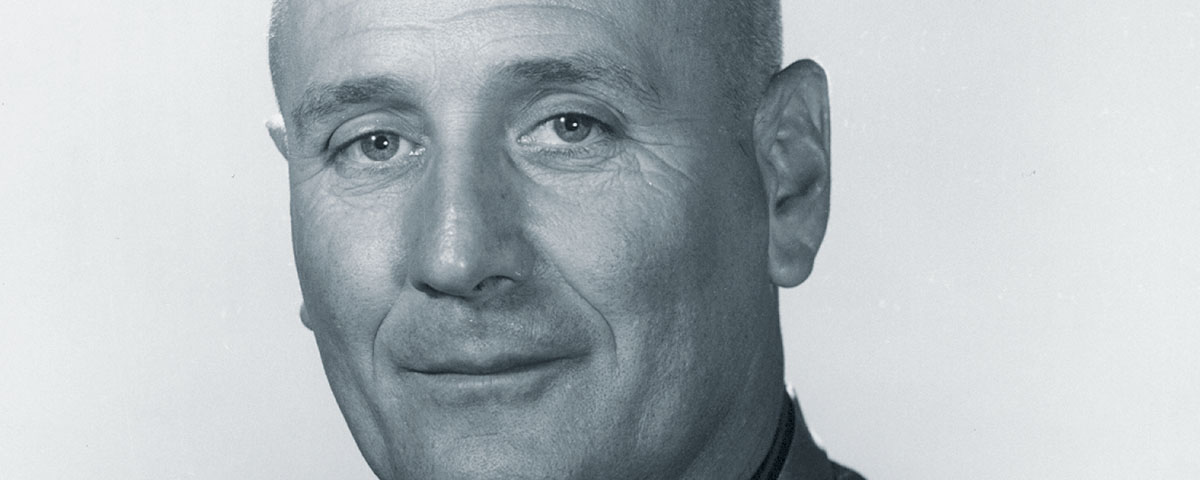When 36-year-old Jimmie Earl Howard arrived in Vietnam in April 1966, he was the perfect recruiting-poster Marine. The stocky native of Burlington, Iowa, enlisted in 1950 after a year at the University of Iowa. Two years later he was a corporal in Korea, where he earned two Purple Hearts and a Silver Star.
On June 13, 1966, Staff Sgt. Howard’s platoon of 15 other Marines and two Navy hospital corpsmen from C Company, 1st Reconnaissance Battalion, 1st Marine Division, were helicoptered to Nui Vu Hill inside enemy-controlled Hiep Duc Valley in northern South Vietnam. The 1,500-foot observation point was Hill 488 on military maps, but two days later would be rechristened in blood as “Howard’s Hill.” A valiant defense of the hill by Howard and his men made them the most decorated platoon in Marine Corps history.
At 7 p.m. on June 15, an Army Special Forces team reported that a 300-man North Vietnamese Army battalion was moving toward Hill 488. With darkness falling there was no time to pull the platoon out. Two hours later the Americans shot a Viet Cong scout only 12 feet from their position, provoking a fusillade of fire that wounded one Marine. Howard pulled his men into a tight circle 20 yards in diameter.
After a brief lull the NVA returned in human waves that attacked with gunfire, grenades, mortars and machine guns. Howard moved among his young Marines, encouraging them and directing their fire. Every defender was wounded. Four were killed, two in hand-to-hand combat, before the enemy fell back temporarily. Howard radioed Lt. Col. Arthur J. Sullivan at nearby Chu Lai: “You have to get us out of here.” But no rescue force could reach Howard’s men that night.
From the valley below the enemy shouted, “Marines, you die in an hour!” One Marine asked, “Can we yell back at them?”
“Sure, yell anything you like.” Howard’s men taunted the enemy with horselaughs. Later Howard recalled, “They were shooting at us and when we started laughing they stopped. I think it had a chilling effect on them. They must have known we were terribly outnumbered, but here we were laughing at them.”
For five hours, the NVA alternated between small probes and full-scale assaults. Howard was hit in the back by grenade fragments and couldn’t move his legs, but continued to drag himself around the perimeter, again encouraging his men and distributing ammunition.
When the grenade supply was gone, he issued one of the most unusual commands in history: “Throw rocks.” The enemy mistook the sound of falling rocks for grenades and instinctively jumped away, exposing themselves to single-shot kills.
At 3 a.m. the radio went dead, and commanders in Chu Lai feared that Howard’s men had been wiped out. But at 6 a.m. Howard sounded reveille as if all was normal. Stunned by the sheer audacity of it, demoralized NVA troops began to fall back.
At dawn helicopters began arriving. By then the survivors had only eight rounds of ammunition—total. And they were still under sporadic fire. Howard waved off the first helicopters, one of which was shot down. It took five hours for a relief force to fight its way from the base of the hill to Howard and secure the top. Only three of Howard’s men could walk to evacuation helicopters without assistance. Six of the 18 were killed.
Three Marines and one corpsman were awarded Navy Crosses, and 13 defenders received Silver Stars. Little more than a year later Howard, recovered from his wounds, received the Medal of Honor in a White House ceremony attended by the other 11 survivors.
Howard retired from the Marines in 1977. He died on Nov. 12, 1993, and was buried at Fort Rosecrans National Cemetery in San Diego.
DOUG STERNER, an Army veteran who served two tours in Vietnam, is curator of the Military Times Hall of Valor, the largest database of U.S. military valor awards.





